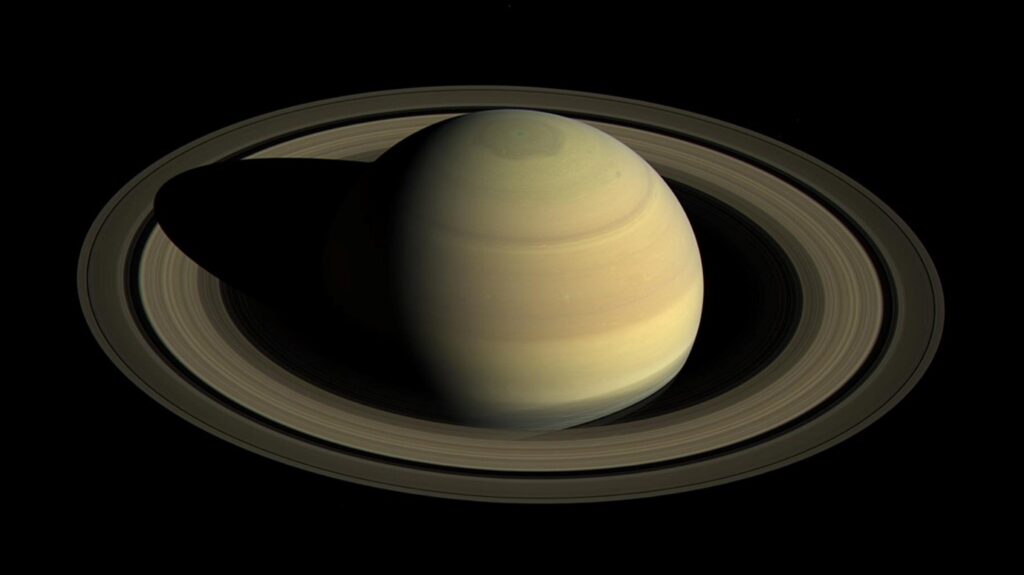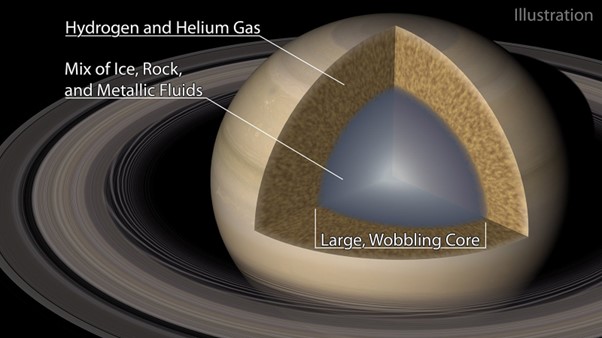
Image Source: NASA
In 2017, the Cassini spacecraft bid its final farewell to Saturn, concluding nearly two decades of groundbreaking exploration. Before its dramatic plunge into Saturn’s atmosphere, Cassini gifted us invaluable data, shedding light on the mysteries within the ringed giant’s depths.
By astutely recording these deviations in Cassini’s trajectory, scientists embarked on a journey to decipher the composition and internal structure of Saturn. Typically, our observations of the planet are confined to its surface, which represents the outermost layer of its atmosphere, leaving the interior shrouded in enigma.
During Cassini’s Grand Finale, researchers focused on minuscule alterations in the frequency of signals emanating from the spacecraft’s communications antenna. These variations, known as Doppler shifts, were a direct consequence of Cassini’s orbits around Saturn and provided unprecedented insight into the underlying gravitational environment beneath the spacecraft.
Harmonizing Cassini’s data with observations of Saturn’s innermost rings, scientists embarked on a transformative journey. Curves and spirals within the rings offered a unique lens into the planet’s internal dynamics, enabling the creation of a comprehensive portrait.
One revelation that emerged from this intricate dance of data was the revelation that Saturn’s interior mirrors the dynamic chaos of its surface. High in the planet’s atmosphere, winds exhibit a phenomenon known as differential rotation, wherein equatorial winds race faster than those at the poles. Cassini’s gravitational data disclosed that this rotational frenzy extends to a depth of approximately 6,200 miles (10,000 kilometers), painting a picture of Saturn’s atmosphere as a realm of profound complexity and boundless energy.

Image Source: NASA
Through the marriage of gravitational data and internal models, scientists explored the flow of heat within Saturn. This crucial factor governs a planet’s energy distribution across its layers and its capacity to generate a magnetic field. Saturn’s unique configuration, featuring a diffuse core and a vigorously charged atmosphere, suggests the possibility of helium rain—a process where helium in the upper atmosphere condenses, descends, and eventually re-emerges in a cyclical dance.
As we bid farewell to Cassini’s invaluable contributions, we await future missions to Saturn, eager to deepen our understanding of this captivating celestial marvel. In the grand tapestry of the cosmos, Saturn remains a testament to the intricate interplay between science, technology, and the boundless wonders of the universe.

Image Source: NASA